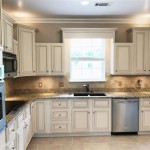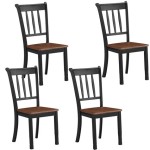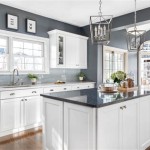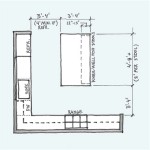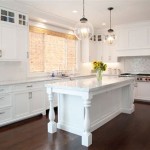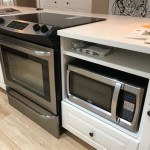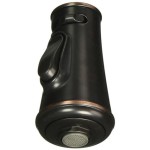How to Set Up a Kitchen
Creating a functional and aesthetically pleasing kitchen requires careful planning and consideration. A well-organized kitchen fosters efficiency, comfort, and enjoyment while cooking and preparing meals. This guide outlines key steps to setting up a kitchen, encompassing layout, storage, and appliance considerations.
Layout and Work Triangle
The kitchen layout is a crucial aspect of functionality, impacting workflow and ease of movement. The concept of the "work triangle" is a fundamental principle in kitchen design, emphasizing the arrangement of the sink, stovetop, and refrigerator in a triangular formation. An ideal work triangle optimizes workspace and minimizes unnecessary steps while preparing meals. The distance between each point of the triangle should fall within a range of 4 to 6 feet, ensuring a comfortable and efficient workspace.
Consider the flow of movement within the kitchen. The layout should allow for a smooth and logical path, minimizing backtracking and congestion. Strategically placing appliances and storage options to facilitate a natural progression through the cooking process helps streamline meal preparation. For example, placing the refrigerator near the pantry simplifies retrieving ingredients. Similarly, locating the stovetop adjacent to the sink facilitates cleanup.
Storage Solutions
Efficient storage is essential for a well-organized kitchen. Maximizing storage space and creating a system for organizing items contribute to a clutter-free and efficient environment. Vertical storage is a valuable strategy, utilizing wall space and cabinets to store items vertically. Utilizing shelves, drawers, and racks within cabinets maximizes storage potential while keeping items visible and accessible.
Implementing a system for organizing kitchenware is key to maintaining order. Consider using containers, trays, and dividers within cabinets and drawers to separate items by category, such as utensils, cookware, and baking supplies. Labeling containers can greatly enhance organization, making it easier to locate items quickly. Incorporating a tiered system for storing items of varying heights, such as pots and pans, optimizes space utilization and facilitates easy access.
Appliance Selection and Placement
Appliance selection plays a significant role in kitchen setup. Consider the frequency of use, desired features, and aesthetic preferences when choosing appliances. For instance, a family that frequently entertains may prioritize a large refrigerator and a double oven. Conversely, a single individual might opt for a compact microwave and a countertop oven.
The placement of appliances is equally important. Strategic placement ensures a safe and efficient workflow. For example, placing the refrigerator away from the stovetop prevents heat from impacting its performance. Positioning the dishwasher near the sink simplifies loading and unloading. Consider the proximity of electrical outlets and plumbing connections when planning appliance placement.
Lighting Considerations
Adequate lighting is crucial for a functional and inviting kitchen. A combination of ambient, task, and accent lighting enhances visibility and creates a warm atmosphere. Ambient lighting provides overall illumination, while task lighting provides focused illumination for specific areas, such as the countertop or stovetop. Accent lighting highlights specific features, such as a countertop or backsplash, adding visual interest.
Consider incorporating natural light whenever possible. Maximizing natural light by installing windows or skylights creates a brighter and more spacious environment. Strategically placing mirrors can reflect natural light, enhancing the sense of spaciousness. Incorporating light-colored surfaces, such as countertops and cabinets, maximizes the reflection of natural light.
Color Palette and Design Elements
The color palette and design elements contribute to the overall aesthetic and functionality of a kitchen. Consider the desired mood and style when selecting colors and materials. A neutral color palette, such as white or gray, provides a clean and timeless backdrop, while bolder hues can add personality and vibrancy. Incorporating contrasting elements, such as different colored countertops or backsplashes, adds visual interest and defines distinct areas.
When selecting materials, durability and ease of maintenance are essential considerations. Countertops in materials like granite or quartz are highly durable and resistant to scratches and stains. Similarly, cabinet finishes in wood or laminate offer a clean and easy-to-clean option. Investing in high-quality materials ensures a kitchen that remains functional and aesthetically pleasing for years to come.

House Planning How To Set Up Your Kitchen

House Planning How To Set Up Your Kitchen

Moving Into A New Home How To Set Up Your Kitchen Organized 31

5 Items To Install And Invest In For A Robust Kitchen Set Up

How To Organize Your Kitchen Into Work Friendly Zones

How I Designed My Studio Kitchen

How To Set Up A Temporary Kitchen During Your Lancaster Remodel

The Easiest Way To Style Open Kitchen Shelves Sanctuary Home Decor

Design Tips For Open Concept Kitchens O Hanlon

How To Have Open Shelving In Your Kitchen Without Daily Staging The Inspired Room

